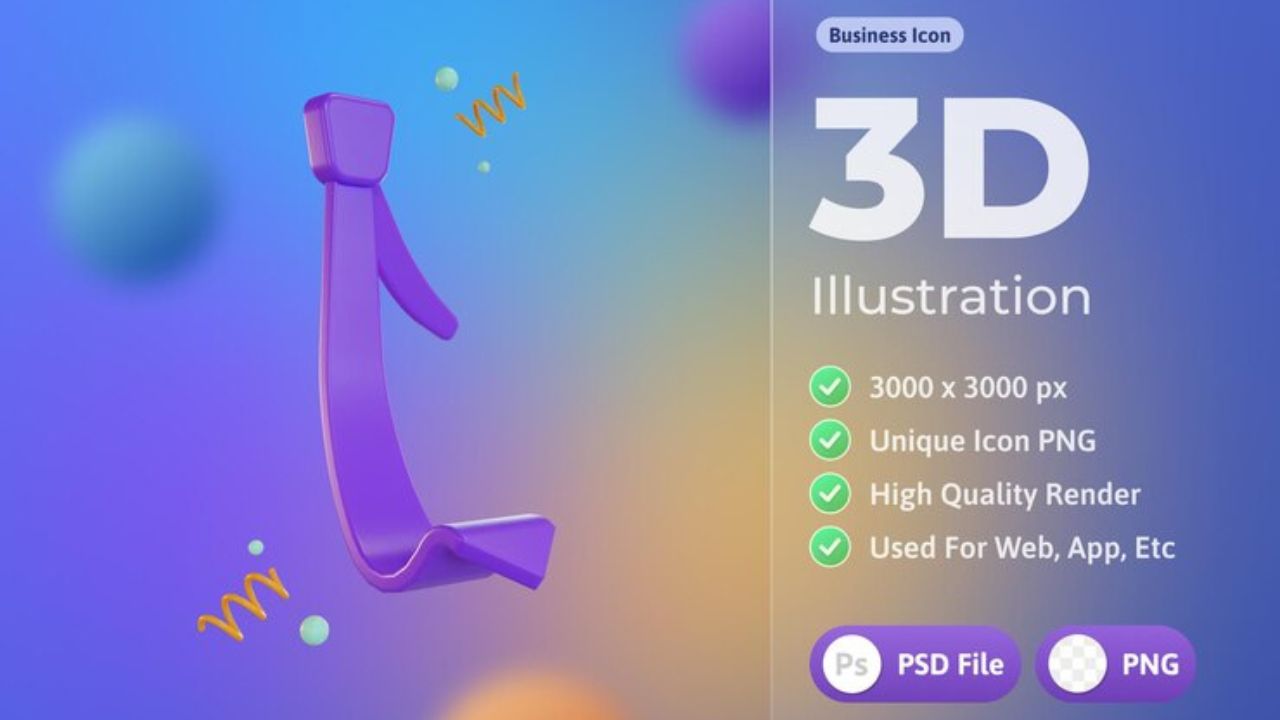HEALTH
Exploring Serge3DX: The Future of 3D Graphics in Web Development

Imagine a world where Serge3DX web pages come alive in three dimensions, immersing visitors in breathtaking visuals and seamless interactions. Welcome to the era of Serge3DX, where 3D graphics redefine what’s possible in web development. As we navigate through the digital landscape, it becomes clear that traditional flat designs simply can’t compete with the dynamic experiences offered by cutting-edge technology.
Serge3DX is at the forefront of this transformation, merging creativity with technical prowess to enhance user engagement like never before. Whether you’re a developer looking to elevate your projects or a business owner seeking an edge over competitors, understanding what Serge3DX brings to the table is essential. Let’s dive into this exciting realm and explore how 3D graphics are not just enhancing web design but revolutionizing it altogether.
Benefits and Advantages of Using 3D Graphics in Web Design
3D graphics bring depth and realism to web design. They create immersive experiences that engage users like never before. This visual appeal keeps visitors on your site longer.
With 3D designs, brands can showcase products dynamically. Shoppers can interact with items, rotating them or viewing them from different angles. This level of interaction enhances understanding and builds confidence in purchasing decisions.
Moreover, 3D elements can make websites stand out in a crowded digital space. Unique visuals capture attention immediately, driving higher traffic rates and user retention.
Additionally, incorporating 3D graphics often improves storytelling capabilities for businesses. Complex ideas become clearer through engaging animations and models, creating memorable connections with audiences.
The benefits extend beyond aesthetics; they also contribute to better SEO performance as unique content attracts backlinks and boosts search rankings over time.
How Serge3DX is Revolutionizing the World of Web Development
Serge3DX is changing the way developers approach web design. By seamlessly integrating 3D graphics, it enhances user engagement significantly. This platform allows for rich visual storytelling that captivates audiences.
With its intuitive interface, Serge3DX makes it easy for both beginners and seasoned pros to create stunning visuals. The learning curve is minimal compared to traditional methods of 3D rendering.
Moreover, performance optimization is built into its framework. This means faster load times without sacrificing quality. Users can expect smooth interactions even on mobile devices.
The adaptability of Serge3DX also stands out. It supports various formats and integrates effortlessly with existing projects. Developers can experiment with innovative designs while keeping their workflows intact.
This technology opens doors for immersive experiences like never before in web development. Businesses are now able to showcase products dynamically, making online shopping more interactive and enjoyable.
The Technology Behind Serge3DX: Understanding WebGL and VRML
WebGL is the backbone of Serge3DX, bringing 3D graphics to life right in your browser. It allows developers to render complex visuals without needing plugins. This means faster load times and a smoother experience for users.
VRML, or Virtual Reality Modeling Language, also plays a role in this technology landscape. Although it’s an older standard, VRML laid the groundwork for creating interactive 3D content on the web. Its concepts have influenced modern frameworks like Serge3DX.
Combining these two technologies creates endless possibilities. Developers can craft immersive environments that captivate audiences while maintaining optimal performance across devices. The result? A richer web experience that feels more engaging than ever before.
Serge3DX leverages both WebGL’s capabilities and VRML’s foundational principles to push boundaries in web development further than we thought possible. These technologies together make exploring virtual spaces easier and more intuitive for everyone involved.
Real-World Applications of Serge3DX: Case Studies and Success Stories
Serge3DX is making waves across various industries with its innovative approach to 3D graphics. One standout case study involves an e-commerce platform that integrated Serge3DX for product visualization. Customers could explore items in a virtual space, leading to increased engagement and higher conversion rates.
In the education sector, a university utilized Serge3DX to create immersive learning experiences. Students interacted with complex models of historical artifacts and scientific phenomena, enhancing their understanding through visual exploration.
Another example comes from the gaming industry. A small indie developer adopted Serge3DX to craft stunning environments that captivated players. The vivid landscapes not only enriched gameplay but also drew attention on social media platforms.
These success stories illustrate how Serge3DX can transform traditional practices into engaging digital experiences across diverse fields. Each application showcases the potential for creativity and innovation in web development powered by this groundbreaking technology.
Future Developments and Exciting Possibilities with Serge3DX
The future of Serge3DX is brimming with potential. As web technologies evolve, so do the capabilities of 3D graphics in web development.
Emerging trends like augmented reality (AR) and virtual reality (VR) are set to enhance user interactions. Imagine a shopping experience where customers can visualize products in their own spaces before purchasing.
Moreover, advancements in AI-driven design tools could streamline workflows for developers. This means creating stunning visuals might become more intuitive and less time-consuming.
Cross-platform compatibility will also be crucial. With Serge3DX, developers may soon build applications that seamlessly function across various devices, from desktops to smartphones.
As community collaboration grows around this tool, we can anticipate plugins and extensions that will further enrich its ecosystem. The landscape is changing rapidly; staying ahead could unlock opportunities we haven’t even imagined yet.
Conclusion: Why
As we look towards the future of web development, Serge3DX stands out as a groundbreaking tool that redefines what’s possible with 3D graphics online. Its implementation of WebGL and VRML empowers developers to create immersive experiences that captivate users like never before.
The benefits of incorporating 3D graphics into web design are numerous. From enhancing user engagement to creating unique storytelling opportunities, the advantages are clear. With Serge3DX, businesses can differentiate themselves in a crowded market by delivering compelling visual content that resonates with their audience.
Real-world applications demonstrate how Serge3DX is not just theoretical; it has already transformed various industries. Companies leveraging this technology have seen increased interaction rates and improved customer satisfaction metrics.
Looking ahead, the possibilities seem endless. As technology continues to evolve, so too will the capabilities offered by platforms like Serge3DX. It paves the way for exciting developments in virtual reality and augmented reality within web environments.
Adopting innovative tools such as Serge3DX allows developers to push boundaries further than ever before—creating dynamic landscapes where creativity meets functionality seamlessly. Embracing these advancements is essential for anyone aiming to stay relevant in today’s fast-paced digital landscape.
HEALTH
How to Choose the Right Cheese for Your Recipes

Few ingredients can change a dish like cheese can. Whether it is creamy pasta sauces, crisp pizzas, sandwiches, or salads, cheese adds a touch of texture, flavor, and depth that makes even the most basic foods seem fancy.
However, with hundreds of varieties of cheeses on the market, each with its own distinctive tastes, melting behaviors, and applications, selecting the right cheese can be overwhelming.
Whether you’re a home cook or a would-be chef, knowing how to match your recipes with cheese can be the key. Here’s how to always pick the best cheese.
Understanding Cheese Basics
It is helpful to understand how each type of cheese is differentiated. Cheese can be classified by texture, taste, and milk base to aid in making the appropriate selection.
Texture
Light creamy cheeses such as Brie, Camembert, and Ricotta are soft and mild and ideal for spreading or melting away. Semi-soft cheeses like Mozzarella and Fontina are smooth to melt, making them perfect for pizza or lasagna. Hard cheeses, such as Parmesan, Pecorino Romano, and Grana Padano, have high flavors and are grateable.
Flavor profile
Cheeses are mild, milky, sharp, and nutty. Mellow cheeses blend well in cuisine, whereas aged or strong ones add flavor and zest.
Milk source
Cow milk is creamy and sweet, goat milk has a tangy freshness, and sheep milk has a rich, earthy flavor.
Integrating Cheese into Cooking
Cheese reacts differently to heat. Knowing its reaction will assist you in choosing the most suitable one for your dish.
For melting
When you want to melt cheese, say, in grilled cheese, pasta, or fondue, you will require a smooth, melting cheese. Best choices? Mozzarella, Gruyere, Fontina, Monterey Jack, or Provolone. Use two cheeses to add richness–Mozzarella to stretch and Cheddar to add flavor, e.g.
For grating and garnishing
When grated, hard cheeses are very umami and crunchy.
- Best choices? Parmesan, Asiago, or Manchego.
- Best use? Top pasta, risotto, or salads with sprinkles to add a savory taste.
For baking
When preparing casseroles, quiches, or baked pasta, use cheeses that do not get greasy.
- Best choices? Gruyere, Swiss, or mild Cheddar.
- Do not use only mozzarella; it may cause too much moisture in baking.
For spreading and dips
Soft cheeses add creamy texture and subtle richness to spreads or dips.
- Best choices? Cream cheese, Ricotta, or Mascarpone.
- Best use? Add herbs or garlic to make dips or sandwich fillings packed with flavor.
Combining the Cheese with Flavor Profiles
The other ingredients are not overwhelmed by cheese; they do not play the second fiddle.
With savory dishes
Intense flavors like meat, garlic, and tomato-based sauce pair well with aged cheeses that can handle the challenge. Cheddar, Asiago, Parmesan, or Gruyere in burgers, pasta, or casserols.
Gusts with sweet or tender tastes
Mild cheeses are an advantage to lighter dishes like fruit salads, pastries, or white sauces. Examples: Ricotta, Brie, or Cream Cheese combined with fruits, honey, or herbs.
With spicy foods
To balance spice, use creamy cheeses that are calming to the palate. Examples: Mozzarella, Queso Fresco, or Monterey Jack in tacos, Nachos, or spicy soups.
Cheese Choosing by Recipe Type
You can explore any of these:
Pizza and pasta
Mozzarella is a traditional pizza topping because it melts and stretches; however, mixing it with Provolone or Parmesan can enhance its flavor.
Parmesan and Pecorino Romano are the best finishing cheeses for pasta, and Ricotta is a great filling for lasagna or ravioli.
Sandwiches and burgers
Cheddar, Swiss, or Pepper Jack offer rich tastes and can be melted. For gourmet choices, you can have Brie or Gouda, with their rich, creamy taste.
Salads and appetizers
Toss salads with crumbled feta, Goat Cheese, or Blue Cheese to add a tangy bite. Combine with fruits, nuts, and vinaigrettes to counteract acidity and sweetness.
Breakfast and brunch
Toast, pancakes, or pastries are ideal with cream cheese and Ricotta. Mild cheeses like cheddar or mozzarella are best for omelets or egg bakes because they will not dominate the flavor.
Finding a Balance Between Texture and Temperature
You don’Remember these:
- One of the most important aspects of cooking cheese is controlling the temperature.
- Soft cheeses are better served at room temperature to make them tastier and creamier.
- Finely grate hard cheeses and add to hot dishes to distribute evenly.
- Cheese should not be overheated since it may separate into fat and protein, giving it an oily feel.
- Add cheese at the end of cooking to preserve its taste and consistency.
Cheese Pairing Experiments
Preparing cheese for cooking is an art rather than a science. Don’t hesitate to experiment:
- Balance sharp and mild cheeses.
- Add dimension with herbed or smoked varieties.
- Add foreign cheeses, such as Halloumi, Cotija, or Comte, to add different textures and flavors.
For example, Halloumi is not meltable, which means that it can be grilled and served in summer salads, whereas Comte can be added to creamy dishes with a nutty flavor.
Storage and Freshness Tips
Here are some tips:
- Even the finest cheese cannot shine when it is not stored properly.
- Wrap the cheese in parchment paper, then place it in a resealable bag to allow it to breathe.
- Do not freeze soft or fresh cheeses- they become soft. Hard cheeses, on the contrary, can be frozen and grated later.
- The expiration date of checks is not important, but you can use smell and look to determine it. Fresh cheese should never grow mold (except in the case of Blue Cheese).
Your cheese must not lose its aroma or texture, and it should be stored properly to enable you to complete any dish with it.
Conclusion
Cheese is not merely a component; it is a storyteller in each dish. With the right cheese, a simple recipe can become something you will never forget, be it in the layering of lasagna, making a sandwich, or adding magic to a salad.
Knowing about texture, melting properties, and pairing principles, you will be able to make certain cheese choices that harmonize with your dishes and amaze each taste. The next time you cook, think outside the box. The ideal decision may be the secret ingredient your recipe has been lacking. Finally, visit maestrella.com to learn more.
HEALTH
Simple Strategies For Supporting Loved Ones Through Addiction Recovery

Understanding Addiction Recovery: What Families Need to Know
Supporting a loved one through addiction recovery is a deeply compassionate act, but also a journey filled with challenges and learning. Addiction is a chronic, complex condition, and successful recovery depends not only on professional treatment but also on the supportive environment provided by family and friends. Local options like addiction treatment Yorktown Heights NY can be an important resource in this journey, offering specialized counseling and therapy for individuals and families. It’s vital to recognize that recovery is rarely a linear process. Relapses can occur and are often part of the journey, not an end to it. By learning about the stages of recovery, family members are better prepared to offer the right kind of support without placing undue pressure on their loved one. Understanding the nature of addiction, the neurobiological factors, and the triggers involved makes family support more effective and compassionate.
Common Barriers To Support And How To Overcome Them
Families often face barriers when trying to support someone in recovery. One major challenge is the fear of enabling harmful behaviors while trying to offer support. There is a delicate balance between being helpful and inadvertently making it easier for the person to continue unhealthy habits. Stigma surrounding addiction can also make it difficult to speak openly or seek help. Additionally, the emotional toll of witnessing a loved one struggle can lead to frustration or burnout. Education is one of the most powerful tools for overcoming these barriers. Connecting with support networks, reading reputable sources, or participating in counseling sessions can clarify misconceptions and provide actionable strategies. Families who take time to learn and connect with others in similar situations feel more empowered and less isolated, allowing them to sustain supportive relationships through the ups and downs of recovery.
Creating Open Lines Of Communication
Effective communication is essential throughout the recovery process. Open and honest dialogue creates a safe environment for your loved one to share feelings, setbacks, and achievements without fear of judgment. The focus should be on listening more than talking—allow your loved one to express themselves, and respond with empathy rather than advice or criticism. Active listening can be practiced by summarizing what your loved one says, maintaining eye contact, and asking clarifying questions to ensure understanding. Avoid blame or rehashing past wrongs—instead, center conversations on current needs and future goals. This foundation of trust can make recovery feel less isolating and more sustainable.
Setting Healthy Boundaries Without Guilt
Boundaries not only protect your own well-being but also create a structure in which recovery can flourish. Clear boundaries—such as refraining from giving money or enabling destructive behaviors—help establish trust and respect on both sides. For example, you may decide to offer rides to appointments or provide emotional support, but draw the line at paying rent or covering debts. Setting and maintaining boundaries can be challenging emotionally, and sometimes guilt may arise. Remind yourself that healthy limits are a form of caring and are vital for everyone’s mental health. Consistent boundaries reinforce accountability, which is invaluable for sustained recovery.
Providing Practical Support in Everyday Life
Small acts of support can have a profound impact. This could be as simple as offering a daily check-in, preparing nutritious meals, or accompanying your loved one to therapy or group meetings. Social support networks are crucial in maintaining sobriety and reducing relapse rates. You may also help your loved one develop healthy routines, celebrate their achievements, and encourage participation in positive social activities. Remember, the strongest support often comes through consistency and presence, rather than grand gestures.
The Role Of Self-Care For Supporters
Supporting someone in addiction recovery can be emotionally draining. Focusing on your own self-care—whether through exercise, relaxation, or hobbies—helps sustain your resilience and emotional well-being. Support groups or other community resources offer a safe space to share feelings and learn from others facing similar challenges. Practicing self-care enables you to stay present, patient, and effective in your supportive role. When you take care of yourself, you’re better equipped to support your loved one for the long term.
Knowing When To Seek Professional Help
There are times when professional intervention becomes necessary. Signs that your family could benefit from outside help include increased arguments, emotional exhaustion, or a sense that progress has stalled. Group therapy, individual counseling, or family therapy can all provide tools and guidance tailored to your specific situation. If you suspect your loved one’s safety is at risk or if you’re unsure about the best course of action, reach out to an experienced addiction counselor or a healthcare provider trained in substance use disorders. Professional support can be a turning point—not only for your loved one but for the entire family dynamic.
Conclusion
Supporting a loved one through addiction recovery is a journey that requires patience, understanding, and compassion. Families play a crucial role by fostering open communication, setting healthy boundaries, providing practical support, and prioritizing their own self-care. While challenges and setbacks are part of the process, education, empathy, and professional guidance can empower families to navigate these difficulties effectively. No one walks the recovery journey alone, and the presence of a supportive, informed family can make a profound difference in both the loved one’s recovery and the family’s own well-being. Remember, small, consistent acts of care and support often have the most lasting impact, reinforcing hope, resilience, and the possibility of sustained recovery.
HEALTH
Long-Term Solutions for Unwanted Hair Removal

Key Takeaways
- Laser hair removal and electrolysis offer proven, long-term reduction and removal of unwanted hair.
- Individual factors—skin tone, hair color, pain tolerance, budget, and available time—influence the optimal method.
- Recent technological innovations make long-term solutions safer and more effective than ever.
Struggling with unwanted hair is a common experience that affects confidence and comfort. While quick fixes like shaving and waxing deliver immediate results, these methods require frequent upkeep and can often lead to irritation and ingrown hairs. Pursuing longer-lasting solutions has driven many to seek professional advice, with a hair assessment Southfield, MI, offering a personalized roadmap based on your skin type, hair texture, and desired results. Personalized assessments are vital in identifying which hair removal method works best for your unique needs and goals. Understanding the spectrum of enduring hair removal options—from modern laser therapies to time-tested electrolysis—empowers you to make well-informed decisions. Each technology has its own strengths and limitations, making professional guidance invaluable as you weigh your options. Consulting with specialists during a hair assessment lets you learn what is possible for your skin and hair type and what to expect regarding permanence, safety, and investment.
Laser Hair Removal: Harnessing Light for Lasting Results
Laser hair removal utilizes focused beams of light that penetrate the skin, targeting the pigment in hair follicles to disable their future growth. This approach works particularly well for people with lighter skin and darker hair, as the dark pigment absorbs the laser energy. The outcome is a significant reduction after several sessions, with many individuals experiencing up to 90% permanent hair reduction in treated areas after a recommended series of treatments. However, those with lighter hair colors or deeper skin tones may see variable results, as the contrast between hair and skin is key to success. Regular touch-up sessions may be needed to maintain results, particularly if hormonal changes stimulate regrowth.
Electrolysis: The FDA-Approved Permanent Solution
Electrolysis is the only hair removal method cleared by the FDA as truly permanent. This technique involves inserting a fine probe into each hair follicle to deliver a small electrical current, destroying the follicle and preventing future growth. Electrolysis is effective for all hair colors and skin types because it does not rely on pigment but instead targets the root structure of the hair. The process can be time-intensive despite its reliability since each follicle is treated individually. It is best suited for smaller areas or those committed to a gradual path to total hair removal. Because of its versatility, electrolysis is often the go-to method for individuals with blonde, gray, or red hair who do not respond to laser treatments.
Intense Pulsed Light (IPL): A Versatile Alternative
Intense Pulsed Light (IPL) resembles laser treatments but uses a broad spectrum of light wavelengths to target hair follicles. IPL is often favored for its versatility and availability—at-home IPL devices bring professional-like treatments into the comfort of your home. However, they generally feature less power than those used in clinics. IPL works best on individuals with light skin and dark hair and often requires more sessions to achieve desired results. Though less precise, its flexibility makes it popular for those seeking gradual hair reduction across larger areas.
Comparing Costs and Long-Term Value
Investing in laser hair removal or electrolysis may seem expensive initially. Still, these professional treatments often offer better value when factoring in the cumulative costs of razors, waxing kits, and regular salon appointments over the years. Beyond financial savings, permanent options dramatically reduce daily or weekly maintenance time, freeing up your routine and providing lasting smoothness.
Considerations for Choosing the Right Method
Several factors influence which long-term hair removal solution is ideal for you:
- Skin and Hair Type: Laser is optimal for high-contrast hair and skin combinations, while electrolysis suits all variants.
- Pain Tolerance: Both methods involve some discomfort—laser typically feels like a mild snap, and electrolysis involves a slight sting as electricity destroys each root.
- Time Commitment: Electrolysis can require numerous treatments over an extended period, depending on the treatment area and hair density, while laser sessions tend to be fewer per area but spaced weeks apart.
- Budget: Assess upfront costs and the combined time and financial expenses of ongoing maintenance versus one-time permanent reduction.
Advancements in Hair Removal Technology
The field is evolving quickly, with newer technologies focused on enhancing comfort and broadening accessibility. Innovative cooling mechanisms, AI-powered devices that calibrate settings automatically for different skin types, and faster, less invasive procedures are redefining patient experiences. As consumer demand rises, expect further innovation and expanded options for safe, effective long-term solutions. For updates on these technological strides, Forbes Health provides proper coverage.
Conclusion
There has never been a better time to explore sustainable solutions for unwanted hair. By leveraging technological advances, consulting experienced professionals for a tailored hair assessment, and evaluating your preferences and needs, you can find a long-term hair removal path that aligns with your lifestyle. The right solution offers not just smooth skin but also peace of mind and freedom from the cycle of temporary fixes.
-

 BLOG1 year ago
BLOG1 year agoEscape to Tranquility Experience Grange Bardage Percheronne in Normandy
-

 LIFESTYLE1 year ago
LIFESTYLE1 year agoAir Jordan 1 Retro High Off-White University Blue
-

 SOCIAL MEDIA1 year ago
SOCIAL MEDIA1 year agoDecoding the Drive Social Media Pyramid Scheme Mystery
-

 LIFESTYLE1 year ago
LIFESTYLE1 year agoAir Jordan 4 Retro Metallic Purple
-

 BLOG6 months ago
BLOG6 months agoDecoding 540-315-8592: From Numbers to Messages
-

 HOW-TO GUIDES1 year ago
HOW-TO GUIDES1 year agoShop Smart and Save with Goldengatemax.shop Online Guide
-

 BUSINESS1 year ago
BUSINESS1 year agoDemystifying 315-442-5267 Common Myths and Facts Revealed
-

 LIFESTYLE1 year ago
LIFESTYLE1 year agoAir Force 1 Shadow Pistachio Frost
